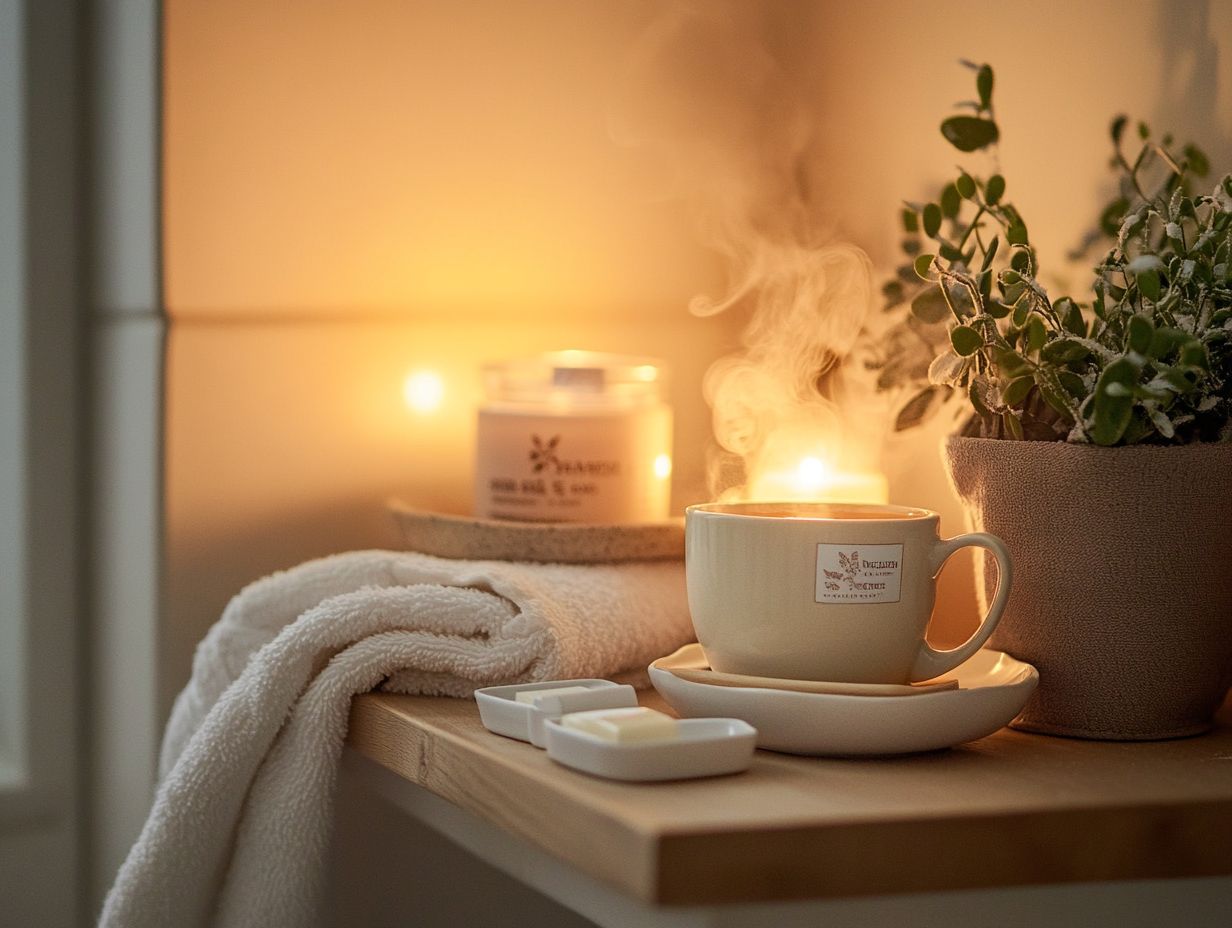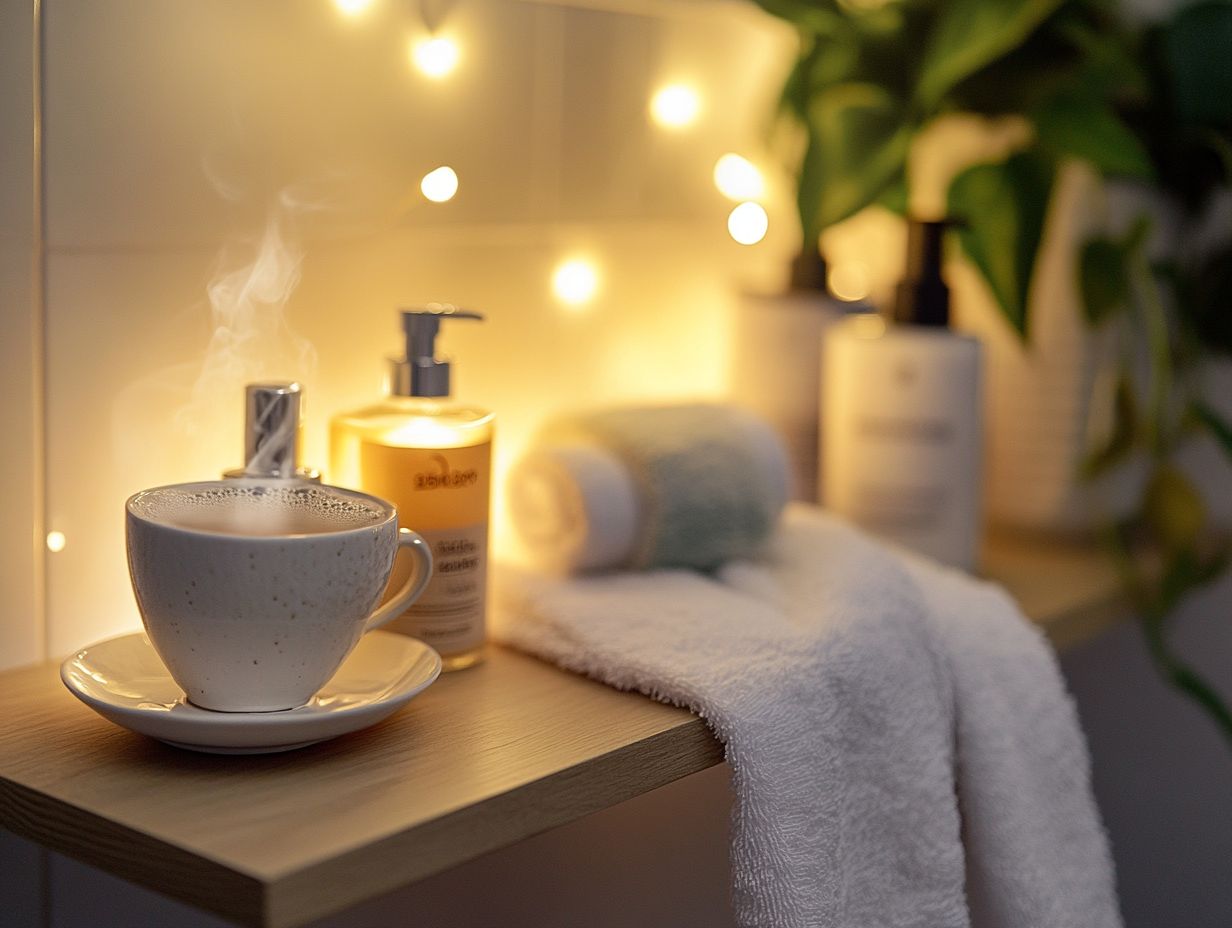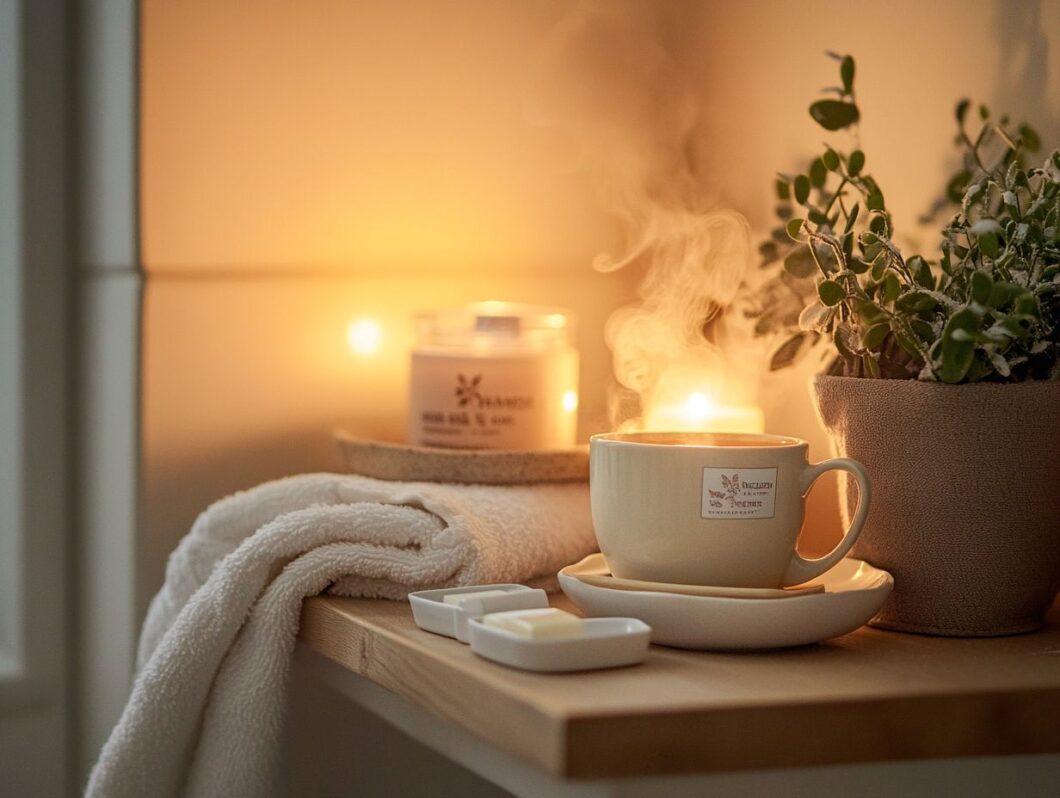Winter can indeed be a beautiful season; however, its cold, dry air can take a toll on my skin. The combination of indoor heating and the outdoor chill often strips moisture, leaving my complexion feeling tight and dry.
Fortunately, I have access to effective strategies to maintain healthy and hydrated skin throughout the winter months. By selecting the right moisturizer and incorporating hydrating foods into my diet, I can combat the harsh effects of winter. This guide provides essential tips and techniques to help me embrace the beauty of the season while keeping my skin glowing and supple.
Key Takeaways:
Why Winter Air is Harsh on Skin

During winter, I notice that the air becomes considerably harsher on my skin due to lower humidity levels and colder temperatures, leading to increased dryness and irritation. Environmental factors such as wind and indoor heating strip moisture from the skin, often resulting in symptoms like redness, tightness, and discomfort.
For those of us with conditions like eczema, the winter months can make our skin even more sensitive, which highlights the importance of understanding how to effectively protect and maintain skin health during this challenging season.
To address these issues, I find it essential to adopt a comprehensive skincare routine specifically tailored for the colder months. This might include using thicker moisturizers that contain ingredients like hyaluronic acid and glycerin, known for their ability to lock in moisture. Additionally, incorporating creams that reinforce the skin’s barrier can provide extra protection against the elements.
Regularly applying soothing treatments can help minimize irritation associated with dry patches and eczema flare-ups. Ultimately, being proactive about skincare during winter not only relieves discomfort but also enhances overall skin resilience against harsh conditions.
Moisturizing Tips for Dry Winter Skin
To effectively combat the effects of dry winter air, I recognize the importance of establishing a comprehensive moisturizing routine that prioritizes skin hydration.
I focus on incorporating products that contain key ingredients like hyaluronic acid and ceramides, as these significantly enhance moisture retention.
Utilizing moisturizing creams and masks allows me to provide an additional layer of hydration.
Furthermore, I find that integrating K Beauty products, renowned for their innovative formulations, into my skincare regimen helps maintain skin elasticity and prevents dryness during the colder months.
Choosing the Right Moisturizer
Selecting the right moisturizer for winter skin is essential for maintaining hydration levels and effectively combating dryness. I prioritize moisturizing creams that are rich in ceramides and hyaluronic acid, as these ingredients work to strengthen the skin barrier and retain moisture, countering the adverse effects of cold weather.
I find that K Beauty products are particularly noteworthy for their innovative formulations, providing an excellent boost of hydration and nourishment, making them a valuable addition to any winter skincare routine.
Understanding the different types of moisturizers available—creams, lotions, and gels—significantly impacts how well I care for my winter skin. Creams, which tend to have a thicker consistency, are ideal for dry or mature skin types, offering deep nourishment. On the other hand, lotions are lighter and more easily absorbed, making them suitable for normal to combination skin.
Gels present a refreshing option for those with oily skin, delivering hydration without feeling heavy.
For individuals facing specific skin concerns, such as redness or eczema, I emphasize the importance of considering products that contain calming ingredients like aloe vera or chamomile.
Brands such as CeraVe and Aveeno provide formulations specifically designed to soothe and heal sensitive skin during the harsh winter months, ensuring that my winter skincare routine effectively addresses personal needs.
Application Techniques for Maximum Hydration

To achieve maximum hydration from my moisturizing products, I recognize that understanding the right application techniques is essential. I begin by double cleansing my face to eliminate impurities, followed by applying hydrating toners or soothing sprays to prepare my skin for optimal absorption.
A makeup artist might recommend applying my moisturizer while my skin is still damp, as this effectively locks in moisture and enhances the overall hydrating effect during the winter months.
Layering products in the correct order—starting with lighter, water-based serums before progressing to richer creams—can significantly improve hydration levels. Timing is also crucial; using a soothing spray just before my moisturizer not only calms the skin but also creates a barrier that facilitates better product absorption.
When applying these products, I employ gentle massaging techniques to enhance penetration into the skin, particularly around the cheeks and forehead.
For oily skin, it’s important to use lighter products and focus on gel-based moisturizers, whereas those with dry skin may benefit from richer creams that provide a protective layer against environmental factors.
Protecting Your Skin from the Elements
Protecting my skin from the harsh elements of winter is essential for maintaining its health and appearance. Despite the cold weather, I recognize that UV rays can still cause damage, which is why I make it a point to apply sunscreen as part of my daily skincare routine, even during the winter months.
Furthermore, I utilize barriers such as protective clothing and accessories to safeguard my skin against environmental factors that can lead to dryness and irritation. This approach ensures that my skin remains hydrated and comfortable throughout the season.
Wearing Sunscreen in the Winter
“`html
Wearing sunscreen during winter is just as crucial as it is in the summer, as harmful UV rays can penetrate clouds and reflect off surfaces like snow. Incorporating a broad-spectrum sunscreen into my daily skincare routine helps protect against both UVA and UVB rays, which can lead to premature aging and skin damage, even in colder months. It is essential for me to choose a sunscreen that suits my skin type and provides adequate protection throughout winter. For more tips on maintaining healthy skin during this season, check out these Top Beauty Tips for Surviving Dry Winter Air.
“`
For individuals with dry skin, selecting a sunscreen with hydrating ingredients such as hyaluronic acid, glycerin, or natural oils can offer much-needed moisture while creating a protective barrier against the elements. I look for formulations labeled as ‘moisturizing’ or ‘nourishing’ to ensure my skin remains hydrated in harsh winter conditions.
Reapplication is of utmost importance; I make it a point to apply sunscreen every two hours, especially after engaging in outdoor activities or sweating. To achieve adequate coverage, I consider applying an SPF product before makeup and incorporate it into my skincare layering routine for optimal protection without sacrificing hydration.
Using Protective Clothing and Accessories

Utilizing protective clothing and accessories is essential for safeguarding my skin from the harsh effects of winter weather. By thoughtfully layering with gloves, scarves, and hats, I can maintain warmth while also protecting my skin barrier from frigid air and biting winds.
This strategic approach is crucial in reducing the risk of skin irritation and dryness, which are common during the colder months. When selecting materials, I prioritize options like soft cotton or wool blends that provide comfort while effectively shielding against environmental factors.
It is vital for me to pay attention to sensitive areas such as my face and hands, opting for windproof fabrics and incorporating moisturizing balms to further combat the damaging effects of winter elements.
Hydrating from the Inside Out
Achieving optimal skin hydration requires a comprehensive approach that extends beyond the use of topical products; it also involves hydrating from the inside out. I understand that drinking adequate water throughout the day is essential for maintaining proper skin moisture levels.
Additionally, incorporating hydrating foods that are rich in electrolytes can significantly enhance overall hydration. I focus on consuming foods such as cucumbers, oranges, and leafy greens, which not only contribute to internal moisture but also support overall skin health, especially during the dry winter months.
The Importance of Drinking Water
Drinking water is essential for maintaining hydration levels in the body, which has a direct impact on skin health, especially during winter when skin tends to become dry. Ensuring adequate water intake helps keep skin cells hydrated, supports the skin barrier, and alleviates dryness and irritation caused by cold weather.
Therefore, striving for the recommended daily intake of water can significantly improve my skin’s moisture retention and overall appearance.
It is important to recognize that individual hydration needs can vary considerably based on factors such as age, weight, activity level, and overall health. While a common guideline suggests consuming about eight 8-ounce glasses a day, those who are more active or living in dry climates may need to increase their intake.
To enhance my water consumption, I find it helpful to infuse beverages with fruits or herbs for added flavor, and I often set reminders throughout the day to encourage regular sipping. Particularly during winter, I remain mindful of my hydration, as the body’s thirst signals may not be as pronounced.
Staying well-hydrated not only benefits my skin but also contributes to my overall well-being.
Incorporating Hydrating Foods into Your Diet

Incorporating hydrating foods into my diet is essential for supporting skin health during the winter months, as it significantly boosts moisture levels from within. Foods such as watermelon, oranges, and leafy greens are not only high in water content but also rich in antioxidants that enhance the skin’s resilience against environmental stressors.
By adding these foods to my meals, I can improve hydration and provide vital nutrients that contribute to a healthy, glowing complexion.
Fruits like strawberries and cucumbers are excellent choices due to their high water content and vitamin C, which is crucial for collagen production and maintaining skin elasticity. Additionally, including foods rich in omega-3 fatty acids, such as walnuts and flaxseeds, helps lock in moisture and reduce inflammation, further enhancing the appearance of my skin.
For a refreshing start to the day, I enjoy creating a smoothie with spinach, banana, and coconut water. At lunchtime, a vibrant salad featuring mixed greens, citrus segments, and avocado serves as a perfect option, brimming with essential nutrients.
These combinations not only provide hydration but also deeply nourish the skin, paving the way for a radiant complexion throughout the colder months.
Other Skincare Tips for Winter
Plus maintaining a solid moisturizing routine, I find that several other skincare strategies can effectively support skin health during the winter months.
Implementing gentle exfoliation techniques allows me to remove dead skin cells, leading to improved absorption of hydrating products, while using a gentle cleanser helps prevent further irritation.
Furthermore, incorporating a humidifier in my living space effectively counters the dry indoor air, creating a more comfortable environment for my skin and reducing dryness and irritation.
Exfoliating and Cleansing Techniques
Effective exfoliation and cleansing techniques are essential for maintaining skin health during winter, particularly for those of us managing dry skin.
I have found that utilizing a gentle cleanser helps remove impurities without stripping away the natural oils that our skin needs. Exfoliating once or twice a week can significantly enhance skin texture and promote better hydration absorption. By opting for non-abrasive exfoliants, I ensure that my skin remains comfortable and free from irritation throughout the colder months.
When considering exfoliation methods, it’s important to differentiate between chemical and physical exfoliants.
Chemical exfoliants, such as alpha-hydroxy acids (AHAs) and beta-hydroxy acids (BHAs), dissolve dead skin cells without the need for manual scrubbing, making them gentler options for sensitive skin like mine. Conversely, physical exfoliants, including scrubs or brushes, can be effective but risk causing micro-tears if used too aggressively.
For those of us with sensitive or dry skin, it’s advisable to select products with a low concentration of active ingredients and to incorporate soothing agents like aloe vera.
A winter cleansing routine should also include hydrating formulations that lock in moisture, ensuring that the skin barrier remains intact during harsh weather.
Using Humidifiers to Combat Dry Air
Using humidifiers is an effective strategy I employ to combat the dry air that often comes with winter, providing significant benefits for my skin health. By adding moisture back into the air, humidifiers alleviate dryness and irritation, making it easier for me to maintain optimal hydration levels in my skin. This is particularly crucial during the colder months when indoor heating can worsen dryness, leading to uncomfortable skin conditions.
The benefits of using humidifiers extend beyond skin improvement; they also enhance overall respiratory health by preventing irritation in my nasal passages and throat, thereby reducing the likelihood of colds and allergies.
I have found various types of humidifiers available, including:
- Ultrasonic
- Evaporative
- Steam vaporizers
Each offering unique features that cater to different needs. Integrating a humidifier into my daily routine is straightforward; I simply place it in common living areas and set it on a timer to maintain optimal humidity levels.
Regular maintenance, such as cleaning the unit and replacing filters, is essential for ensuring efficient operation. This diligence ultimately leads to an improved indoor environment that fosters better health and overall comfort.


